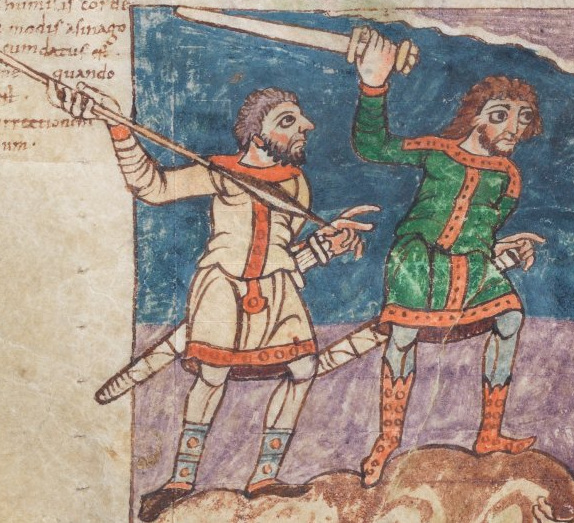Compounding this was the fact that following the collapse of the roman empire centuries before, much of the industry and knowledge of metalwork was effectively lost to much of Europe. Where the Romans were able to muscle out high quality steel blades in the form of their hundreds of thousands of gladiolus, the people of the then modern Europe struggled to produce even a fraction of as many blades, and few were of any quality to compare.
The industry and money brought together under Carolingian's reign allowed for swords to again be produced, but compared to their roman predecessors, they were outlandishly expensive things, fit only for the riches and most elite of combatants. In modern terms, the cost as been projected as $1,400 USD equivalent. several times the cost of a capable modern repeating rifle.

The sword produced was a unique design, evolved from Merovingian sword, the Frankish blade was characterized by a lobed pommel that both offered a counter weight to offset the blade, and a stop to keep the hand on the handle. It was edged on both sides of the blade,, tapered to a good point, and used one handed. The design would be the forbear to the arming sword, centuries later.

Due to its high cost, only the wealthy, and at that time, that mean the powerful as well could carry it. Nobles, royals, and their elite guard would likely be the only ones to carry it in the early 8th century, though it likely was slightly more prevalent by the end of the same.

The weapons were durable, strong, and deadly, all things that the native blades of the north could not boast in the least. For the soldiers, nobles, and more famously raiders (called 'viking') of the Scandinavia kingdoms and tribes, the answer was simple.
They reached out and traded, purchased, and if needed, stole the requirement armaments from their southern neighbors.
While there is no doubt that they took weapons from the dead, there is also ample record that larger purchases were made, or even attempted though more formal business routes. The practice was common enough that 864, Charles the Bald made the penalty for selling weapons to the vikings death.
And the resistance to the transfer was not merely political. Viking raider and their now famous long-ships have been charted as far south as the mouth of the Mediterranean sea, and it was only a generation into the 9th century that the great migration took place, where whole families would not only land, but settle in both modern England, and northern France, becoming Normandy (which literally translates to "land of the north men") in time. The blades used in their conquests ever overwhelming 'imported' (or stolen) from the south, including the franks, and their neighbors.
And this is why in the modern age, even among scholarly circles, a whole class of weapon that was exclusively made in France, and used extensively by Frankish troops, would be called 'the viking sword'.
His Lordship Ivo Blackhawk
Kingdom of Ansteorra
"Long Live the King!"
His Lordship Ivo Blackhawk
Kingdom of Ansteorra
"Long Live the King!"
No comments:
Post a Comment